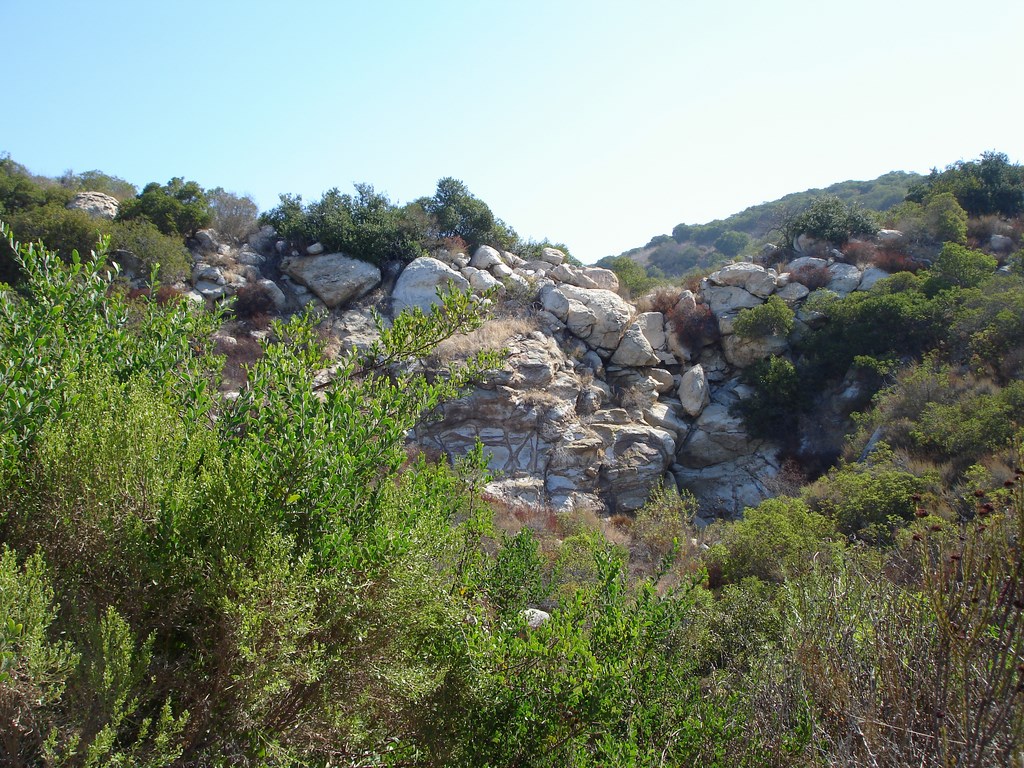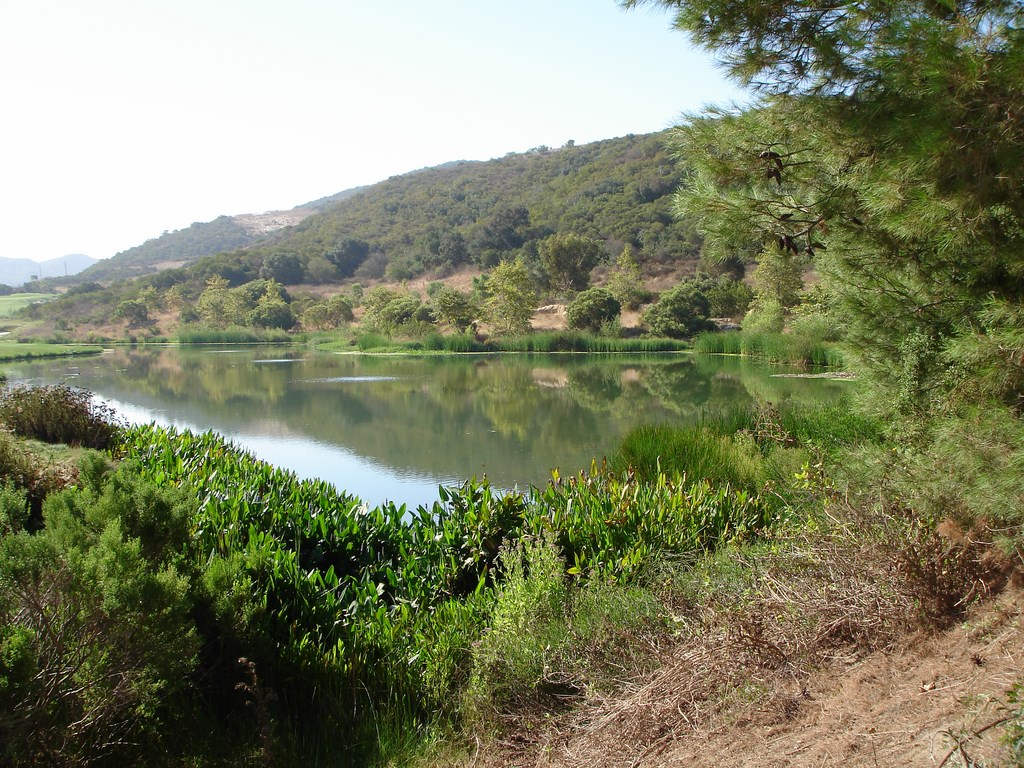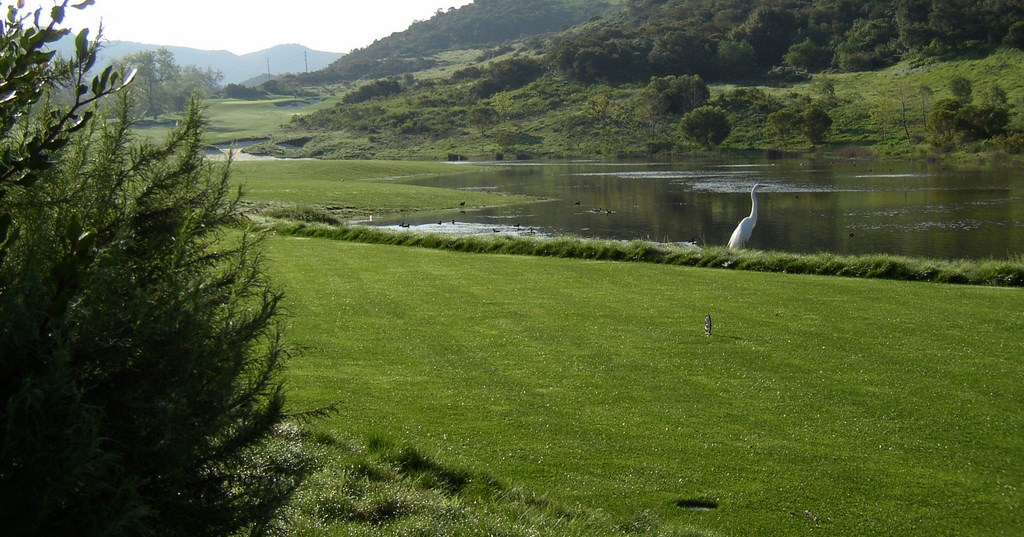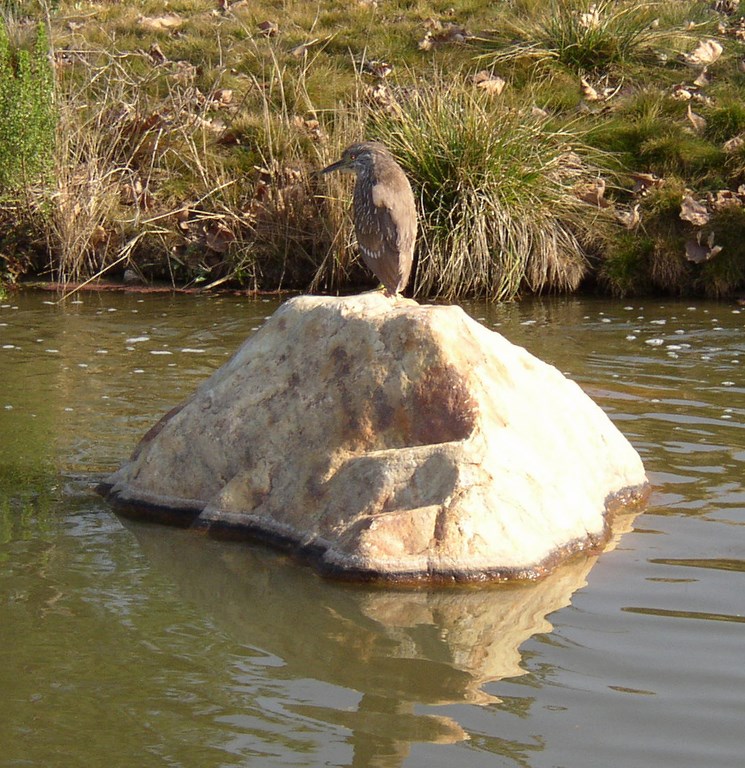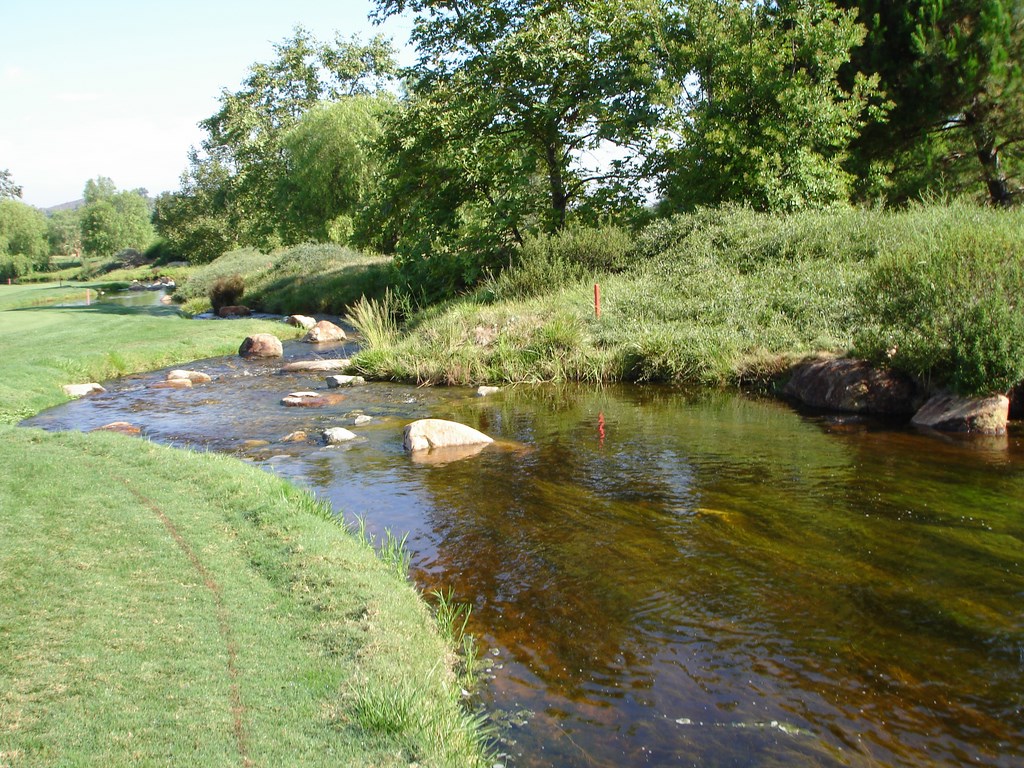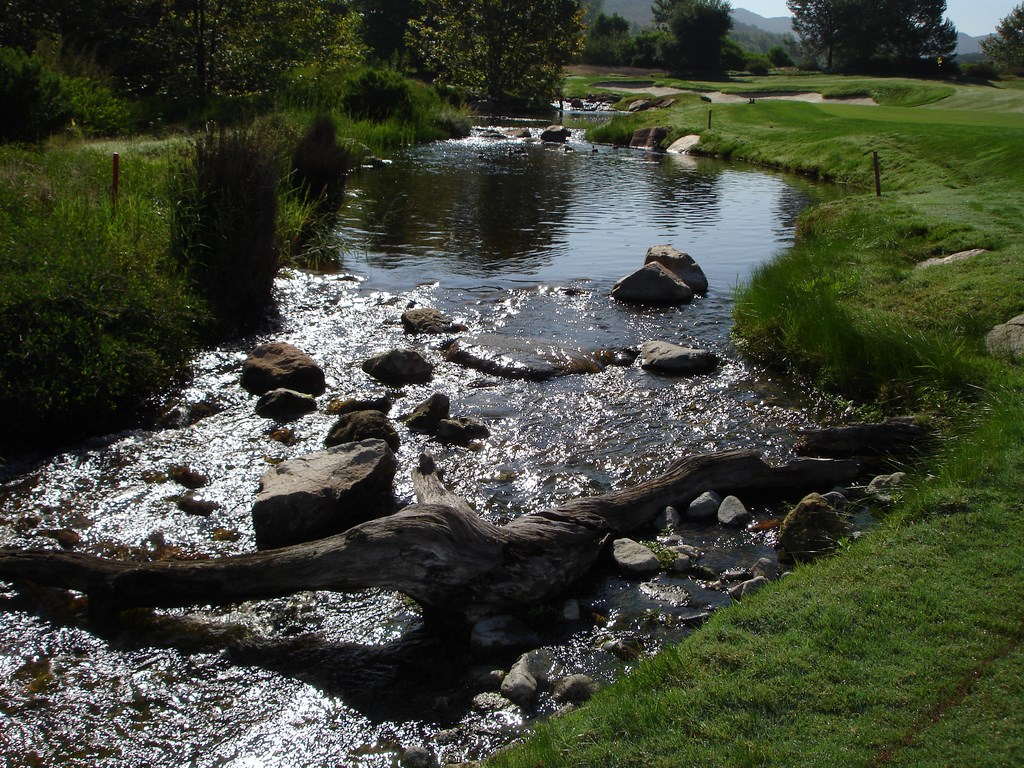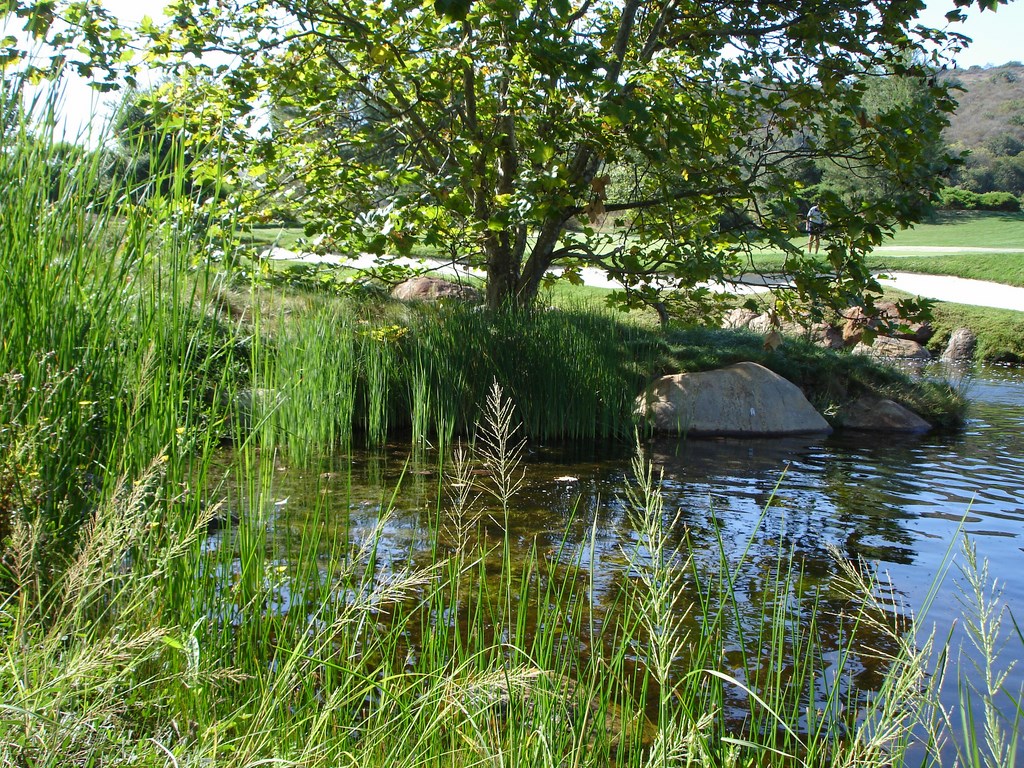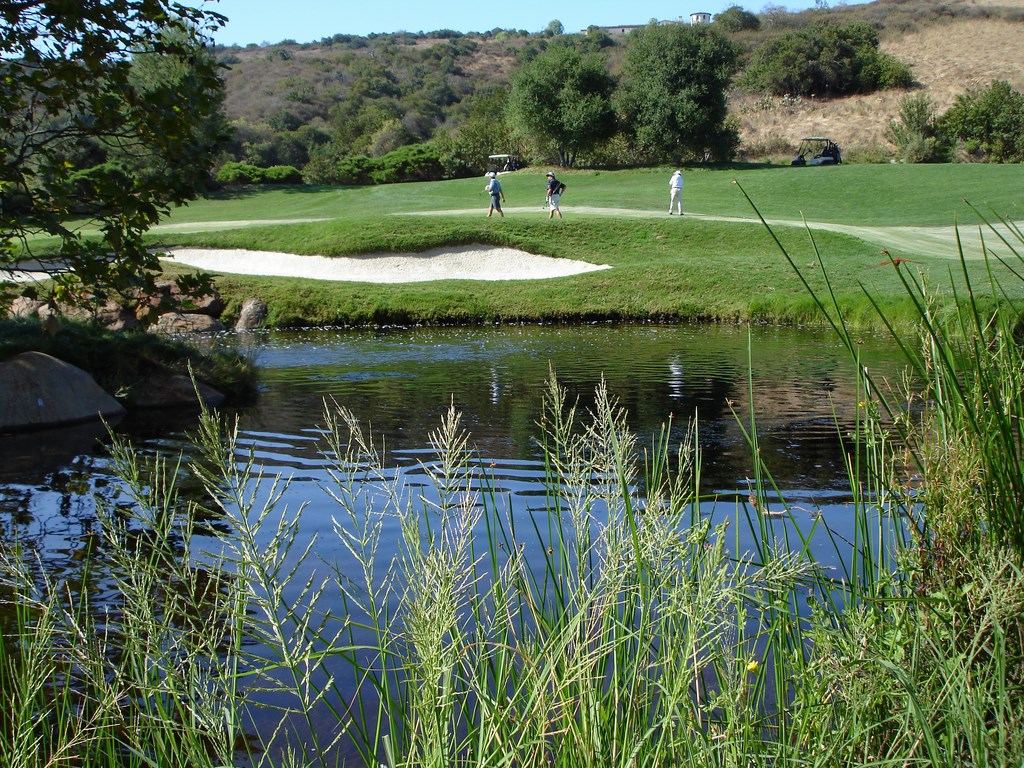Mastering the Greens
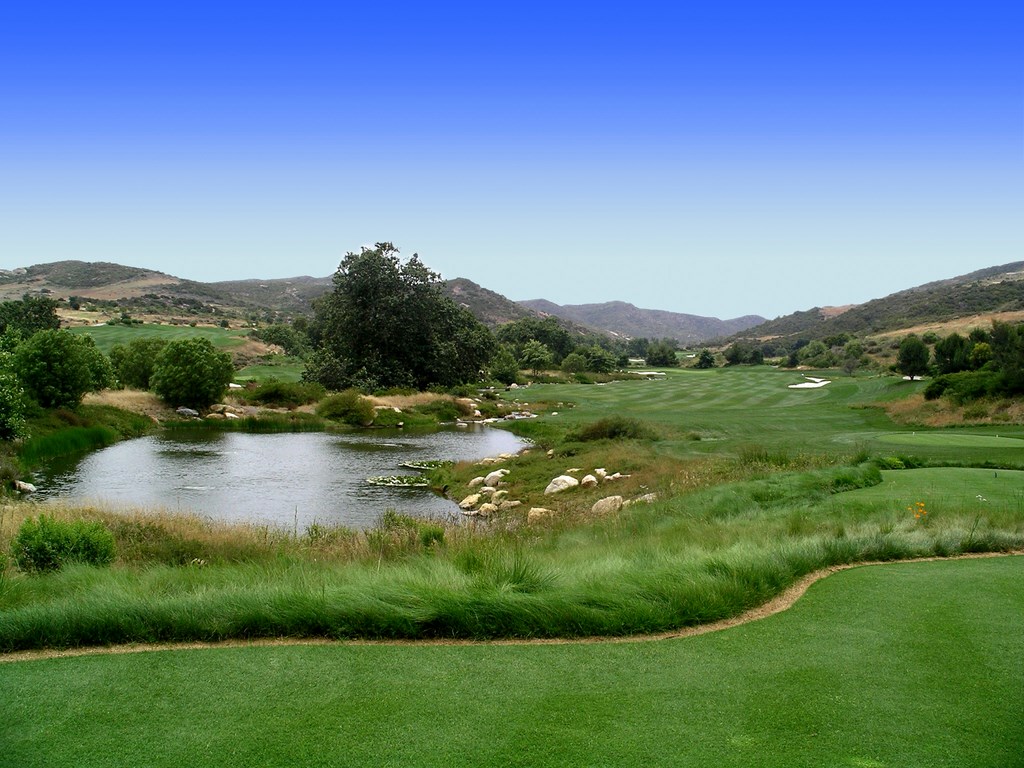
Creating watershapes and landscapes that are natural in appearance is always a challenge, says Ken Alperstein of Pinnacle Design, a firm that specializes in high-end projects related to top-flight golf courses. For this project in Shady Canyon, however, the ante was upped considerably by the site’s location in an environmentally sensitive coastal canyon in southern California – a design challenge intensified by regulatory scrutiny every step of the way.
It was a job that forced everyone involved to be on exactly the same page at all times.
The landscapes and watershapes at the Shady Canyon Golf Club in Irvine, Calif., were developed by the Irvine Company as the heart of an upscale residential community. The wilderness area set aside for the course and its immediate surroundings had a subtle, bucolic charm all its own – a character the design team needed to respect in every way as the work progressed.
But there was a huge complicating factor: The site is in a pristine coastal canyon in southern California, complete with dramatic topography, spectacular rock formations and a delicate sage-and-grasslands landscape dotted by indigenous Sycamores and Live Oaks. What this left us to do was figure out how to build an 18-hole golf course of great beauty and distinct playability while treading as lightly as possible on a state-protected natural environment.
A light touch was truly essential: To gain permission to build homes, roads, the golf course and its amenities on the site, the Irvine Company had to dedicate huge adjacent acreage as permanent environmental easements that were to provide habitats for multiple species of protected birds, mammals, reptiles, insects and plants.
It was always a challenge, but our success in making things work here in ecologically responsible ways has also become a distinct point of pride.
ON THE TEAM
The golf course was designed by renowned golf-course architect Tom Fazio, who thrives on incorporating the natural landscape and topography into his work. He had worked previously with the Irvine Company in creating courses at nearby Oak Creek and Pelican Hill. In turn, Fazio had worked with our company, Pinnacle Design of Palm Desert, Calif., on several past projects, so all the pieces fit together neatly in a way that eased everyone’s progress.
Our role was to design, engineer and oversee installation of 81 acres of planted areas and watershapes related to the golf course. The watershapes included a three-and-a-half-acre lake, a one-acre pond and a stream measuring more than 900 feet in length. We had worked in environmentally sensitive areas before, but to date this project stands out for the degree to which we were required to preserve surrounding habitats.
| The area surrounding the golf course was in pristine condition when we arrived, complete with classic coastal landforms, vegetation and wildlife, and our aim was to make our work mesh with the natural environs in every way possible. We started by placing water where it belonged – at low, collecting points on the terrain – and mapped out the array of displaced plants so we could restore disturbed areas to near-original condition. |
It’s interesting to note that the rigorous approval process didn’t extend our timetables dramatically; rather, it simply intensified the context in which we worked. For its part, the Irvine Company had been working on obtaining permits for the entire development (including the golf course) for nine years before we came on the scene. For ours, the design-work and submittal and approval process took us about six months. All the way along, we were considerably aided by the fact that the Irvine Company was consummately professional at every turn and did all it took to keep the process moving and the regulators satisfied.
Project biologists mapped everything – homes, roads, clubhouse and course – using GPS technology to record exact measurements and contours and establish the easements intended to protect the delicate Coastal Sage habitat. All of these maps had to submitted, reviewed, approved and subsequently inspected, often by multiple agencies including city and county building departments as well as state environmental agencies. The development was also approved by the Audubon Society – a step that wasn’t required but that lent credibility to the preservation effort.
Everyone involved appreciated the fact that the area in which we were working was environmentally sensitive as well as tremendously beautiful and that preserving as much open space as possible was highly desirable. As mentioned above, the area serves as habitat for a number of protected species – including the gnatcatcher, a bird that has figured prominently in restricting developments in many other areas of the state.
THE NATURAL LOOK
Two biologists were on hand at all times, checking and rechecking easement boundaries, dictating when certain areas could be cleared and asking us in a couple cases to sequence our work to accommodate the mating and migration habits of gnatcatchers, raptors and other species. In some cases, they had us work on a portion of a hole at a time because the access in and out would’ve trampled too much ground; in others, they told us when we could trim foliage to avoid disrupting the nesting patterns of hawks and other raptors. They also steered us away from introducing certain invasive plants and guided us in removing species that had previously invaded the habitat.
The purely preservationist side of the project dovetailed neatly with our design work.
The planting areas, for example, are considered “enhanced re-vegetation,” meaning that we blended the newly planted areas in seamlessly with the vegetation of the undisturbed land with just a few additions of non-native species for aesthetic purposes. In all cases, of course, these selections had to be reviewed and approved by city, state and federal agencies.
| Our real masters throughout the process were the birds, mammals and reptiles that had called Shady Canyon home well before this project came to be. A great deal of our satisfaction comes in the fact that they seem to have taken a shine to the ready supply of water in what can be a parched environment, with numerous species of birds taking obvious advantage of the pond and lake along with deer and numerous other species. |
We worked with a local resource – Tree of Life Nursery (San Juan Capistrano, Calif.) – that specializes in propagating indigenous species. In addition to Sycamores and Live Oaks, we also worked with chaparral species including Monkey Flower, Brittlebush, sage and various grasses.
In a sense, working off the natural landscape in this way took some of the pressure off the landscape-design process in that what we were doing was looking at the natural environment and mimicking the “planting plan” that nature provided. Our aim: Once everything grows in, you won’t be able to tell where the existing landscape stops and the re-vegetated areas begin.
As might be expected, the course and its surroundings were graded with exceptional care. We followed original contours wherever possible, but in a couple of areas we imposed new grading that looked just as natural as the original lay of the land. This occurred most often where playing areas abutted the bases of steep slopes: If we had run the edge of the course to the base of the slope, it would’ve looked unnatural even though the slope itself hadn’t been touched.
That naturalistic ethos defined every aspect of the design and installation work – including the watershapes, which also take their cues from nature. In these environs, we find two primary water systems: streams that run during the rainy season, and inland lagoons that form in low-lying areas when the rains come. We studied these natural features and did everything possible to replicate their looks in our bodies of water.
WATER HAZARDS
Water is used on golf courses for three basic purposes – either as an obstacle in the field of play, as a source of irrigation water or strictly as an aesthetic enhancement. In this case, the watershapes situated in and around the first two holes serve as a way to make a spectacular first impression without creating hazards in the field of play.
In fact, the stream that runs down the left side of the first hole was sited there partly because most players are right handed and are more likely to slice the ball away from the water rather than toward it. It was also strategically placed to draw attention away from the right side of the first hole, which is one of the few areas on the course where homes stand in close proximity to the playing area.
The stream flows from headwaters hidden in an area adjacent to the first green, flowing back to the tee area and into the one-acre pond. The larger lake is located on the second hole, situated in such a way that, from the back-tee area, players have to hit over the water, thus putting the lake in play for the first half of the hole. It holds approximately seven million gallons and supplies water to the course’s irrigation system.
| The large lake plunges to a depth of 20 feet, holds approximately seven million gallons of reclaimed water supplied by a local municipality and is drawn down and replenished as needed to serve the course’s irrigation needs. Despite that utilitarian role, we carefully fashioned the edges to give the give the lake a convincingly ‘natural’ appearance. |
There is no filtration system: All the water is reclaimed and is constantly being used for irrigation and then replaced.
A big part of bringing a naturalistic look to these vessels comes simply from locating them in spaces where water might collect naturally. The lake and pond have accordingly been set up in low-lying areas, while the stream passes along a natural gully that runs through the course. (About 50 yards away and running parallel to our stream behind a row of indigenous Sycamores is a truly natural seasonal stream we used as inspiration.)
The other key to establishing a natural appearance has to do with the edge and shoreline treatments we used. We always put a great deal of effort into these details, and this project is certainly no exception.
All of our ponds, lakes and streams are constructed with 30-mil PVC liners and covered with concrete along the edges. The challenge is creating edges that provide interwoven transitions from the water to the aquatic plants at the edge and on to the terrestrial plantings. This includes angled edge transitions in which we bring turf and “dry” plantings right up to stands of emergent aquatic plants to give the edge an eroded appearance.
In all areas, we bring the soil over the outside of the concrete edge to make certain no concrete can be seen. And in the event that erosion or stormwater might wash away the covering soil, all of the concrete is finished with cobble and spoils that will make it look like exposed dirt until maintenance crews get around to restoring these areas.
EDGE SUCCESS
We design the aquatic planting beds on all of our lakes and ponds with irregular configurations at the edges. We create small eddies, estuaries and peninsulas where water and plants weave in and out and give the impression that the plants are invading both the shoreline and the water’s surface.
We also create a variety of small structural details that hold the soil in place and keep it from sloughing off into the water – a point facilitated by the fact that in most areas our “soil line” stops just below the water’s edge, then transitions to a concrete “spoils finish” to a depth of about 36 inches.
The only soil we use within three feet of the water’s edge is in the planting beds themselves. This has the dual advantage of allowing us to intermingle the plants freely between the landscape and water while retarding photosynthesis in the edge areas. Such an approach helps us maintain clearer water at the edge while making the watershapes more serviceable down the line. Beyond the edges, the rest of the liner is covered with 12 inches of earthen material.
| The stream cuts a wide path across the land, averaging about 22 feet in width along its 900-foot length. With the pond and lake, clarity wasn’t a huge issue, but it was a focus here: We wanted to show off every subsurface detail and every linear foot of edge because the streambed is plainly visible from many angles along its winding course. |
The edges are planted primarily with irises, pickerel and various water lilies and rushes. (We avoided cattails and other tulles because, although native to the area, they can be fairly invasive.)
In addition to the liners and concrete, the pond and lake have multiple underwater aerators, and the suction and return points are also all underwater. As mentioned above, there’s no filtration on the project. Instead, we generate quality water through ecological balance, re-circulation, aeration and overall lake maintenance. And this is perfectly adequate for the application: Most healthy bodies of standing water have moderate levels of turbidity, so we didn’t really want the water to be crystal clear and therefore seem part of an artificial system.
As was also mentioned above, the lake is fed by a municipal reclaimed-water source and is drawn down for irrigation. The fill-and-drain system is set up so the level of the lake never fluctuates by more than six inches. There’s also an air-gap detail to prevent any backflow from the lake into the city’s water system.
The lake reaches a depth of 20 feet, but nowhere does the slope exceed a four-to-one ratio. There’s a hidden overflow box that is plumbed to a culvert leading to a nearby natural streambed: In the event of a good, soaking rain, excess water is stored in the lake and then is used for irrigation.
STREAM SCENE
The lake and pond water have a natural, deep-blue appearance but are not crystal clear, so they required minimal detailing beyond the edges. By contrast, the long streambed plays a high-visibility role, so its underwater landscape is something to which we paid a great deal of attention.
The detailing of a streambed, of course, is always done on site in a mostly improvisational manner, with installers, course designers and other staff constantly eyeballing views and adjusting configurations of stone material and edging details with natural streambeds in mind. In this case, the effect we sought was of a thick, slow-moving meadow stream meandering along the side of the fairway.
The stream averages about 22 feet in width and goes through seven feet of vertical transitions along its 900-foot length. It’s a gentle-seeming flow (of about 2,500 gallons per minute) over a rocky bottom and past highly detailed edges.
The stream’s source is a small, upwelling bog hidden from golfers’ views around a bend. It appears to flow from the large lake – a simple solution that accommodated our need to separate the two water systems.
The water works its way down through a series of levels marked by small ponds in the heart of the stream. These ponds slow the flow and accentuate vertical drops over carefully placed weirs. When installing these weirs, we went to great pains to vary their looks because it’s so rare in nature to see water cascading over knife edges.
| As is the case with the lake and stream, the pond into which the stream flows isn’t intended to make the course more difficult: It’s removed far enough from the field of play that it is mainly a decorative presence rather than a hazard – all in keeping with the player-friendly philosophy that guided the course’s design. |
What usually happens instead is that the water breaks over cobbles and smaller stones that build up behind bigger stones and then hugs the bigger rocks as it flows to the lower level – and never do these transitions occur in straight lines perpendicular to the shore! Accordingly, we work these transitions over broad areas, creating a variety of places where water breaks, separates and rejoins the flow.
Our stream edges follow the same sort of pattern we use with ponds and lakes, although the transitional areas are narrower in streams and there are many places where the turf interfaces with the water. To accentuate a natural appearance, we placed two large, fallen sycamore trunks across the streambed – a simple detail that draws a lot of attention, adds a sense of natural drama to the setting and serves as a habitat for turtles that thrive in the area.
We generated sketches of the stream before installation began, but the on-site process was so improvisational and involved so much give-and-take with the golf-course installers that no more than 30 percent of what we drew actually wound up being built. In this arena, we relied heavily on the skills of our waterfeature contractor, Cook & Solis Construction (Escondido, Calif.), which did a patiently masterful job.
TIME TESTED
In keeping with the guiding philosophy of the course architect, the watershapes are primarily decorative and come into play only when a golfer hits an off-line shot. That kind, aesthetic spirit certainly inspired our efforts in creating watershapes that delight the eye without factoring too heavily into anyone’s game or ruining anyone’s good time.
We completed our work in Shady Canyon in the fall of 2001, and it’s a delight at this point to visit the place, see how well the plants have grown in and observe at first hand how seamlessly our work flows into the surrounding, undisturbed landscape. This is partly a tribute to our work, but it also requires a tip of the hat to course superintendent David Major, who has seen to the scrupulous maintenance of all planted areas and who has fine-tuned many a detail through the years.
Much has been said in recent times about the need to make massive landscape structures such as golf courses work harmoniously within their larger settings, and Shady Canyon is clearly a place where that need has been met. In this case, our actions along those lines were largely governed by the ecological sensitivity of the area in which we worked, but I prefer to think that the site itself inspired our work and guided the entire project team to a spectacular conclusion.
Shady Canyon Golf Club has a unique, subtle beauty of which all of us are proud – a natural splendor that adds lasting value to the adjacent properties and the entire community.
Ken Alperstein is co-founder of Pinnacle Design, a golf-course architecture firm with offices in Palm Desert and San Diego, Calif. He is a 17-year veteran of the landscape-architecture industry and has specialized in golf-course landscaping since 1989. Alperstein and his partners, Ron Gregory and Bill Kortsch, founded Pinnacle to serve the highly specialized golf course-design industry. The company’s portfolio includes high-end championship golf courses, clubhouses and grounds throughout the Western United States – including several courses rated in the top 100 in the United States by Golf Digest and Golf magazines.












